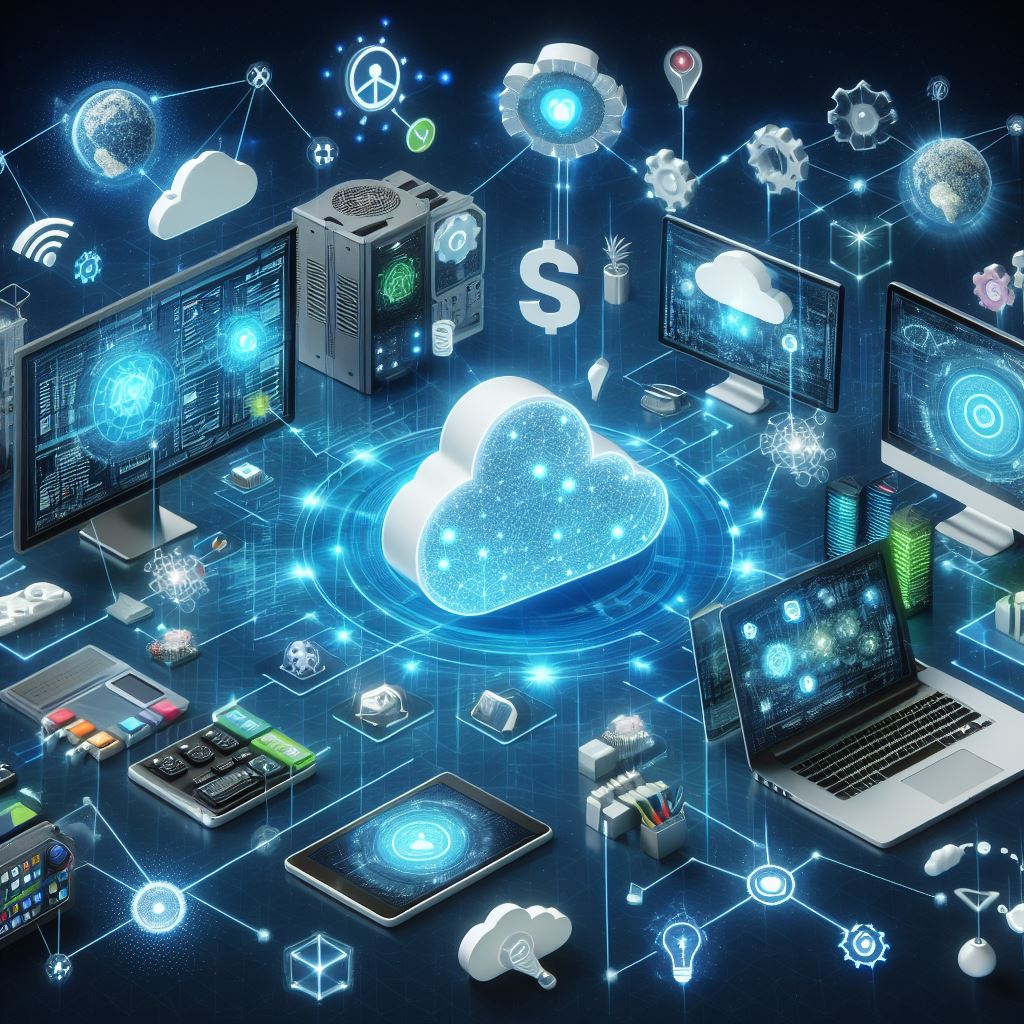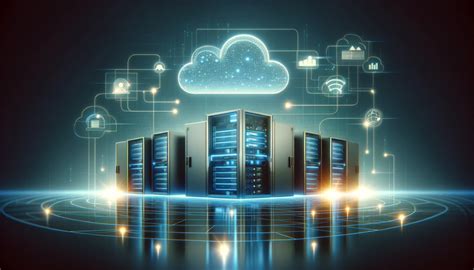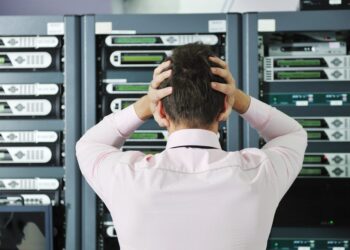In the rapidly evolving landscape of digital infrastructure, a silent yet profound revolution is underway, redefining how data is processed, analyzed, and accessed. This paradigm shift is spearheaded by edge servers, which are increasingly becoming the linchpin of modern computing. No longer is data solely routed to distant, centralized cloud data centers; instead, computation is moving closer to the source of data generation, right to the “edge” of the network. This strategic relocation promises unprecedented gains in speed, efficiency, and reliability, directly impacting everything from autonomous vehicles and smart cities to real-time industrial automation. For businesses and technology enthusiasts alike, understanding the transformative power of edge servers is not merely an academic exercise; it’s essential for harnessing the next wave of innovation and, for content creators, a critical subject for generating high Google AdSense revenue through relevant, in-depth, and highly sought-after information. This comprehensive article will delve into the core concepts of edge computing, explore the multifaceted advantages brought by edge servers, dissect their diverse applications, and peer into the future of this pivotal technology.
The “Edge”: A Paradigm Shift in Computing
To grasp the significance of edge servers, we must first understand the concept of “edge computing” itself. For decades, the dominant computing model has largely been centralized: data is generated by devices (like your phone, a sensor, or a security camera) and then sent over a network to a powerful, centralized data center (often in the cloud) for processing, analysis, and storage. While effective for many tasks, this model faces significant limitations as the volume and velocity of data escalate, particularly with the proliferation of IoT (Internet of Things) devices.
Edge computing fundamentally shifts this paradigm. It involves performing data processing, analysis, and storage closer to where the data is actually created or collected, rather than sending it all the way to a distant cloud or central data center. The “edge” refers to the geographical and logical periphery of a network—the points where data is generated or consumed. Edge servers are the hardware components that enable this distributed processing.
Think of it as moving a small, highly capable mini-data center closer to the action. This can be at various points:
A. Device Edge: Directly on the device itself (e.g., smart cameras with built-in AI for facial recognition). B. Local Edge/On-Premise Edge: Within a local network, such as a factory floor, a hospital, or a retail store (e.g., servers managing automated machinery). C. Network Edge: At the cellular base station, a local exchange, or an internet service provider (ISP) point of presence (e.g., for traffic management).
The driving force behind this shift is the sheer volume of data being generated, the critical need for low latency, and the desire for enhanced security and operational resilience.
The Unprecedented Advantages of Edge Servers
The strategic deployment of edge servers unlocks a myriad of advantages that are crucial for the next generation of digital applications and services. These benefits directly address the limitations of purely centralized cloud computing in an increasingly connected world.
A. Drastically Reduced Latency
This is arguably the most significant advantage of edge computing. Latency refers to the delay before a transfer of data begins following an instruction for its transfer. In traditional cloud computing, data must travel significant physical distances to a centralized data center and back. Edge servers, by bringing computation closer to the source, dramatically cut down this travel time.
- Real-Time Processing: For applications where even milliseconds matter, such as autonomous vehicles, augmented reality (AR), virtual reality (VR), remote surgery, or drone control, ultra-low latency is non-negotiable. Edge servers enable instant decision-making.
- Immediate Response: Imagine a smart factory where machines need to respond to anomalies instantaneously. Edge computing allows sensors to process data and trigger actions without waiting for a round trip to the cloud, preventing costly downtime or safety hazards.
- Enhanced User Experience: For interactive applications, reduced latency translates directly into a smoother, more responsive, and immersive user experience, critical for gaming, streaming, and collaborative tools.
B. Significant Bandwidth Optimization
Sending vast amounts of raw data from edge devices to the cloud consumes enormous network bandwidth. Edge servers act as intelligent filters and processors, alleviating this burden.
- Pre-processing at the Source: Instead of sending all raw data (e.g., continuous video feeds from thousands of cameras), edge servers can preprocess, filter, and analyze data locally. Only aggregated insights or critical events are then sent to the cloud.
- Reduced Network Congestion: By minimizing the data traffic flowing to central data centers, edge computing helps prevent network bottlenecks and ensures more efficient use of available bandwidth across the entire system.
- Cost Savings: Lower bandwidth consumption directly translates into reduced operational costs for data transmission, especially for large-scale IoT deployments.
C. Enhanced Data Security and Privacy
While cloud security has advanced, processing sensitive data closer to its origin offers inherent security and privacy benefits.
- Reduced Attack Surface: Less data traveling across public networks means fewer opportunities for interception or cyberattacks. Processing sensitive data locally minimizes its exposure.
- Local Data Compliance: For industries with strict data residency laws or privacy regulations (e.g., healthcare, finance), edge computing allows sensitive data to remain within a specific geographical boundary or on-premise, simplifying compliance efforts.
- Improved Anomaly Detection: Edge servers can perform immediate security monitoring and anomaly detection, identifying and responding to threats at the source before they can propagate across the wider network.
D. Improved Operational Resiliance and Reliability
Edge servers enhance system robustness by reducing dependency on continuous cloud connectivity.
- Offline Operation Capability: In environments with intermittent or no internet connectivity (e.g., remote industrial sites, smart farms, disaster zones), edge servers can continue to operate and process data autonomously.
- Distributed Failure Points: A localized failure at one edge server doesn’t necessarily bring down the entire system, unlike a single point of failure in a centralized cloud. This distributed architecture improves overall system uptime and reliability.
- Edge-to-Edge Communication: Future developments will enable edge devices and servers to communicate directly with each other, forming highly resilient mesh networks that can operate even if central cloud connectivity is lost.
E. Scalability and Flexibility
Edge computing provides a flexible framework for scaling IoT deployments and data processing capabilities.
- Modular Expansion: New edge devices and servers can be added incrementally to meet growing demands without overhauling the entire centralized infrastructure.
- Customized Solutions: Edge deployments can be tailored to specific environmental or application needs, allowing for highly optimized hardware and software configurations.
- Support for Diverse Workloads: Edge servers can handle a wide range of workloads, from simple data aggregation to complex AI/ML inference, adapting to the specific requirements of various edge applications.
Diverse Applications: Where Edge Servers Shine
The transformative power of edge servers is evident across a multitude of industries, driving innovation and enabling capabilities that were once futuristic.
A. Autonomous Vehicles and Smart Transportation
This sector is one of the biggest beneficiaries of edge computing due to the absolute criticality of real-time decision-making.
- Self-Driving Cars: Vehicles generate terabytes of data per hour from sensors (cameras, LiDAR, radar). Edge servers within the car process this data instantly for obstacle detection, navigation, and collision avoidance, where milliseconds of latency are fatal.
- Traffic Management: Smart intersections equipped with edge servers can analyze real-time traffic flow, optimize signal timings, and even prioritize emergency vehicles, reducing congestion and improving safety.
- Fleet Management: Edge devices on delivery trucks or public transport can monitor vehicle performance, driver behavior, and route optimization locally, sending only aggregated data to the cloud.
B. Industrial IoT (IIoT) and Smart Factories
Edge computing is at the heart of Industry 4.0, enabling intelligent automation and predictive maintenance.
- Predictive Maintenance: Sensors on factory machinery process vibration, temperature, and acoustic data at the edge. Edge servers analyze this for anomalies, predicting equipment failures before they occur, minimizing downtime and maintenance costs.
- Real-Time Quality Control: High-speed cameras and AI algorithms running on edge servers can inspect products on assembly lines for defects in real time, preventing faulty items from proceeding.
- Robotics and Automation: Edge servers enable robots to make rapid, localized decisions, coordinate movements, and adapt to changing conditions on the factory floor with minimal latency.
C. Smart Cities and Public Safety
Edge servers are foundational to creating truly intelligent urban environments.
- Video Surveillance and Analytics: Instead of sending all video streams to the cloud, edge servers at street corners or in public spaces can perform real-time facial recognition, object detection, and anomaly alerts, enhancing security and privacy by processing data locally.
- Smart Lighting and Utilities: Edge devices can monitor energy consumption and environmental conditions, optimizing street lighting, waste management, and utility distribution for efficiency and sustainability.
- Emergency Response: Edge servers can process data from various sources (sensors, cameras, mobile devices) to provide real-time situational awareness for first responders during emergencies, optimizing deployment and resource allocation.
D. Healthcare and Remote Patient Monitoring
Edge computing offers significant advancements in patient care, especially for remote or critical applications.
- Wearable Health Monitors: Edge devices on patients (e.g., smartwatches, continuous glucose monitors) can analyze vital signs and health metrics locally, alerting patients or caregivers to critical changes instantly.
- Remote Surgery and Telemedicine: Ultra-low latency provided by edge servers is crucial for real-time video and haptic feedback during remote surgical procedures or high-fidelity telemedicine consultations.
- Hospital Operations: Edge servers within hospitals can manage vast amounts of patient data from medical devices, improving workflow efficiency, asset tracking, and localized data analytics while maintaining stringent privacy standards.
E. Retail and Smart Stores
Edge servers enhance the in-store customer experience and optimize operations.
- Inventory Management: Edge devices on shelves can track stock levels in real time, alerting staff to low inventory and optimizing replenishment processes.
- Personalized Customer Experience: Edge servers can analyze anonymous in-store movement patterns or point-of-sale data to offer personalized promotions or product recommendations to customers via their mobile devices as they shop.
- Loss Prevention: AI-powered cameras at the edge can detect suspicious behavior or shoplifting attempts in real time, improving security.
The Architecture of Edge Computing: Components and Interplay

Understanding how edge servers function requires a look at the broader edge computing architecture, which involves a hierarchy of computing power and data flow.
A. Edge Devices
These are the endpoints that generate or collect data. They are typically resource-constrained devices, such as:
- IoT Sensors: Temperature, pressure, motion, light sensors.
- Smart Cameras: Security cameras, industrial vision systems.
- Wearables: Smartwatches, fitness trackers, medical monitors.
- Vehicles: Cars, drones, industrial robots.
- Smart Appliances: Refrigerators, thermostats.
These devices often perform initial data collection and sometimes very basic filtering.
B. Edge Servers (or Edge Gateways/Nodes)
These are the critical intermediate layer. Edge servers are more powerful than edge devices but less powerful than full cloud data centers. They are deployed close to the data source. Their primary functions include:
- Data Ingestion and Aggregation: Collecting data from multiple edge devices.
- Local Processing and Analytics: Performing real-time analysis, AI/ML inference, and data filtering.
- Data Storage (Temporary): Storing relevant data temporarily for immediate processing or in case of network outages.
- Network Connectivity: Providing connectivity to edge devices and acting as a conduit to the cloud.
- Security and Management: Enforcing security policies and managing edge devices.
Edge servers can range from small, ruggedized computers deployed in harsh environments to racks of servers within a local branch office or a telco’s central office.
C. Cloud or Central Data Center
While edge servers handle immediate processing, the central cloud or data center still plays a vital role for:
- Long-Term Storage: Storing vast archives of data for historical analysis and compliance.
- Big Data Analytics: Performing complex, long-term analytics, training AI/ML models using aggregated edge data.
- Global Management: Centralized management, orchestration, and provisioning of edge infrastructure.
- Complex Computations: Handling highly resource-intensive tasks that don’t require ultra-low latency.
The relationship between the edge and the cloud is symbiotic: the edge handles the immediate, localized, and latency-sensitive tasks, while the cloud manages the large-scale, long-term, and global aspects.
Challenges and Considerations for Edge Server Deployment
While the benefits of edge servers are compelling, their widespread adoption comes with a unique set of challenges that need careful consideration.
A. Hardware and Environmental Constraints
Deploying servers outside of controlled data center environments introduces new complexities.
- Ruggedization: Edge servers often need to withstand harsh conditions: extreme temperatures, dust, vibration, and humidity.
- Power Consumption: Efficient power usage is critical, especially for remote or battery-powered deployments.
- Physical Security: Protecting physical hardware in remote or publicly accessible locations from theft or tampering.
- Space Limitations: Edge deployments often have limited physical space, requiring compact and dense server solutions.
B. Network Management and Connectivity
Managing a highly distributed network of edge servers can be complex.
- Intermittent Connectivity: Designing systems that can function effectively even with unreliable backhaul connections to the cloud.
- Network Bandwidth at the Edge: Ensuring sufficient local network capacity for data exchange between devices and edge servers.
- Connectivity Standards: Integrating various communication protocols (5G, Wi-Fi 6, LoRaWAN, BLE) used by edge devices.
C. Security and Data Governance
While edge computing can enhance security, it also introduces new attack vectors.
- Distributed Security Management: Ensuring consistent security policies and patching across hundreds or thousands of distributed edge nodes.
- Data Sovereignty: Managing data that resides in various geographical locations, adhering to local privacy laws.
- Vulnerability at the Edge: Protecting edge devices and servers from physical and cyber threats at exposed locations.
D. Software Orchestration and Management
Deploying and managing applications across a vast, distributed edge infrastructure is a significant challenge.
- Orchestration Tools: Developing robust tools to remotely deploy, update, and manage software on edge servers at scale.
- Resource Management: Efficiently allocating compute, storage, and network resources across disparate edge nodes.
- Hybrid Cloud Integration: Seamlessly integrating edge deployments with existing cloud and on-premise infrastructure.
E. Cost and Return on Investment (ROI)
The initial investment in edge infrastructure can be substantial, requiring careful ROI analysis.
- Hardware Costs: Purchasing and deploying specialized edge hardware.
- Deployment and Maintenance: Costs associated with physically deploying and maintaining distributed infrastructure.
- Software Licensing: Licensing for edge-specific operating systems, virtualization, and application platforms.
Despite these challenges, the compelling benefits, particularly for mission-critical and real-time applications, are driving rapid investment and innovation in edge computing solutions.
The Future Landscape: Edge, AI, and 5G
The future of computing is undeniably tied to the continued evolution of edge servers, driven by powerful synergies with other emerging technologies.
A. The 5G Revolution
The rollout of 5G networks is intrinsically linked to the growth of edge computing.
- Ultra-Low Latency: 5G’s inherent low latency capabilities are perfectly complemented by edge processing, enabling truly real-time applications that demand instantaneous responses.
- Massive Connectivity: 5G’s ability to connect a vast number of devices simultaneously (massive IoT) creates an unprecedented scale of data generation, making edge processing essential for bandwidth management.
- Network Slicing: 5G’s network slicing allows for customized network segments with guaranteed performance, ideal for critical edge applications like autonomous vehicles or remote surgery.
B. AI at the Edge
Bringing Artificial Intelligence and Machine Learning capabilities to the edge is a transformative trend.
- Real-Time AI Inference: Edge servers can run pre-trained AI models for immediate decision-making (e.g., real-time video analytics for security, predictive maintenance on machinery).
- Edge-Based Model Retraining: While large model training often happens in the cloud, smaller, incremental model updates or personalization could occur at the edge, adapting to local data patterns.
- Data Privacy for AI: Performing AI analysis on sensitive data locally ensures privacy compliance by not sending raw data to the cloud.
C. Serverless Edge Computing
The concept of “serverless” computing, where developers focus solely on code without managing underlying infrastructure, is extending to the edge. This simplifies deployment and management of edge applications.
D. Industry-Specific Edge Solutions
We will see a proliferation of highly specialized edge server solutions tailored for specific industries, such as ruggedized hardware for oil rigs, fanless designs for medical environments, or energy-efficient solutions for smart agriculture.
E. Open Standards and Interoperability
As the edge ecosystem matures, there will be a growing emphasis on open standards and interoperability, allowing different vendors’ edge devices and servers to communicate and integrate seamlessly.
The Distributed Future of Data
Edge servers are not merely an incremental improvement in computing; they represent a fundamental architectural shift towards a more distributed, intelligent, and responsive digital world. By moving computation and data processing closer to the source of data generation, they effectively dismantle the limitations of traditional centralized cloud models, unlocking unprecedented capabilities in latency reduction, bandwidth optimization, security enhancement, and operational resilience. From powering the next generation of autonomous systems and revolutionizing industrial automation to enabling truly smart cities and transforming healthcare delivery, the impact of edge computing is pervasive and profound. While challenges related to hardware ruggedization, distributed management, and security integration persist, the relentless pace of innovation, coupled with the synergistic advancements in 5G and Artificial Intelligence, ensures that edge servers will continue to be a cornerstone of our increasingly connected future. Understanding this pivotal technology is essential for businesses looking to gain a competitive edge and for content creators seeking to inform and engage a tech-savvy audience, making “Edge Servers Revolutionize Data Access” a high-value topic for maximum online visibility and engagement.








